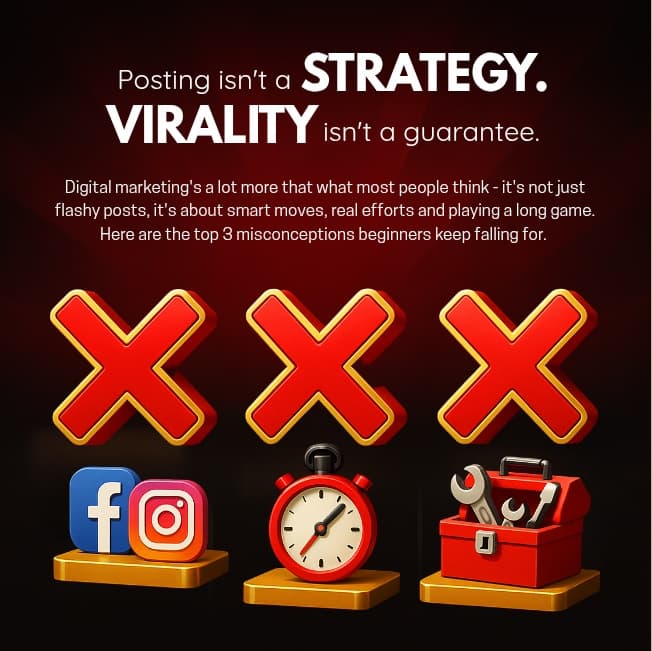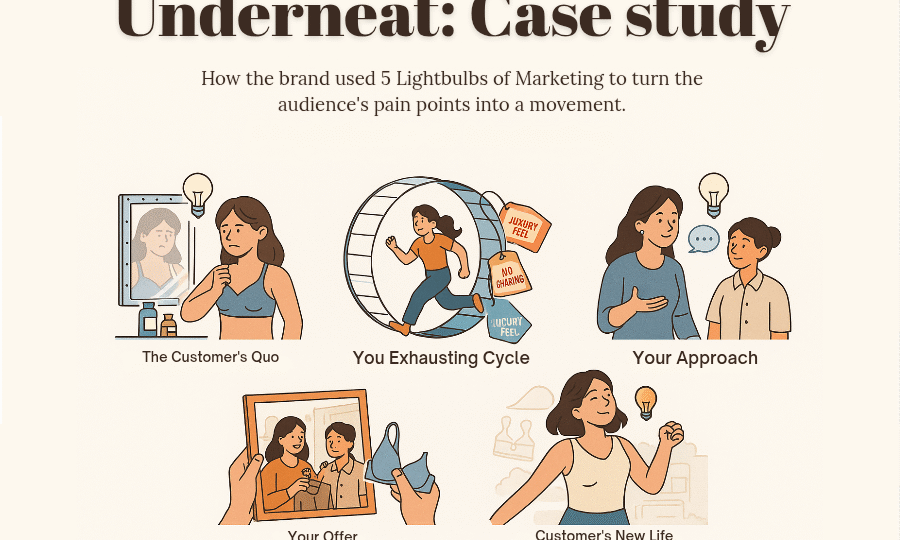
Introduction: A launch you could feel
There’s product marketing, and then there’s “I saw this reel and felt like someone read my diary” marketing.
That’s exactly what happened when Underneat, a new innerwear brand co-founded by Kusha Kapila, took over Instagram.
The brand launched with a 10-part reel series named “What are you wearing under?” where Kusha humorously unpacked the unspoken discomforts, women face with innerwear. Each reel built on the last, the audiences couldn’t stop watching.
The results? Insane engagement with all the reels hitting over 5 million views, while several others crossing the 10–12 million mark with thousands of comments and shares.
People weren’t just watching – they were nodding, tagging their friends, and saying things like: “Okay, but why is this literally my life?” But this wasn’t an overnight viral moment – it was the brilliant execution of a deep-rooted psychological marketing model: The 5 Lightbulbs of Marketing.
In this blog, we’re breaking down:
- What the 5 lightbulbs are and why they work
- How Underneat used this strategy in a reel series
- What brands (big or small) can learn from this campaign
What are The 5 Lightbulbs of Marketing
The 5 Lightbulbs of Marketing is a powerful psychological storytelling technique used by top-tier marketers and brands who know that customers don’t just buy products – they buy solutions to problems they feel seen in. This framework is designed to walk your audience through a five-step emotional shift – from “I’m not sure you get me” to “I trust you with my money.” It’s especially effective in problem-aware markets, where the customer knows something isn’t working but they’re tired, skeptical, and overwhelmed by all the options they’ve already tried.
So, what does this model actually do?
- Builds trust before pitching a product
- Acknowledges pain points without sounding salesy
- Makes the audience feel heard before trying to “fix” them
And most importantly – it creates momentum toward action, one lightbulb at a time
1. The Customer’s Quo
This is where it all begins – by holding up a mirror to your audience’s current reality. The Customer’s Quo is about calling out the everyday discomforts, and silent frustrations your customers are already living with. It’s not about offering solutions yet but rather showing them, “You’re not imagining this. It’s real and frustrating. And no, you’re not the only one dealing with it.”
It’s that first spark of connection. The moment your audience thinks:
“Wait… how do they know exactly what I’m going through?”
Watch how Kusha does this in the first reel → Episode 1
In this reel, Kusha addresses the fact how women are constantly adjusting, tolerating, and dealing with discomfort from innerwear – and how it’s weirdly not spoken about.
The delivery? Equal parts humour, truth, and relatability.
No preaching. Just “I see you.”
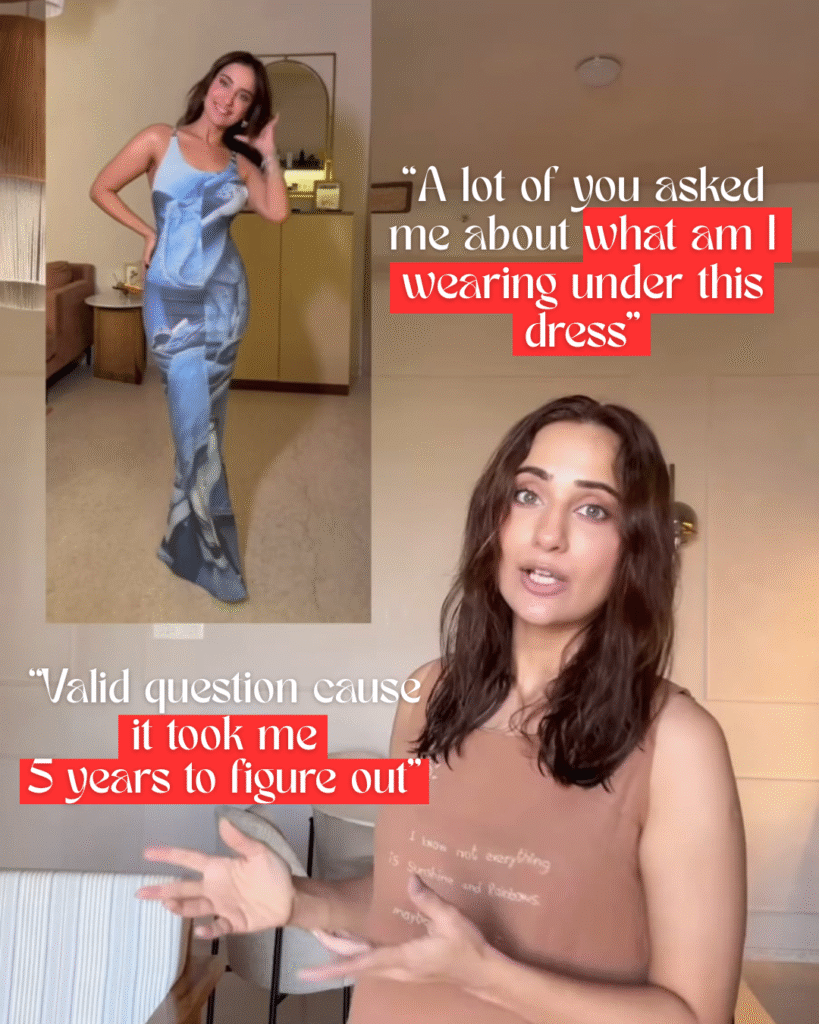
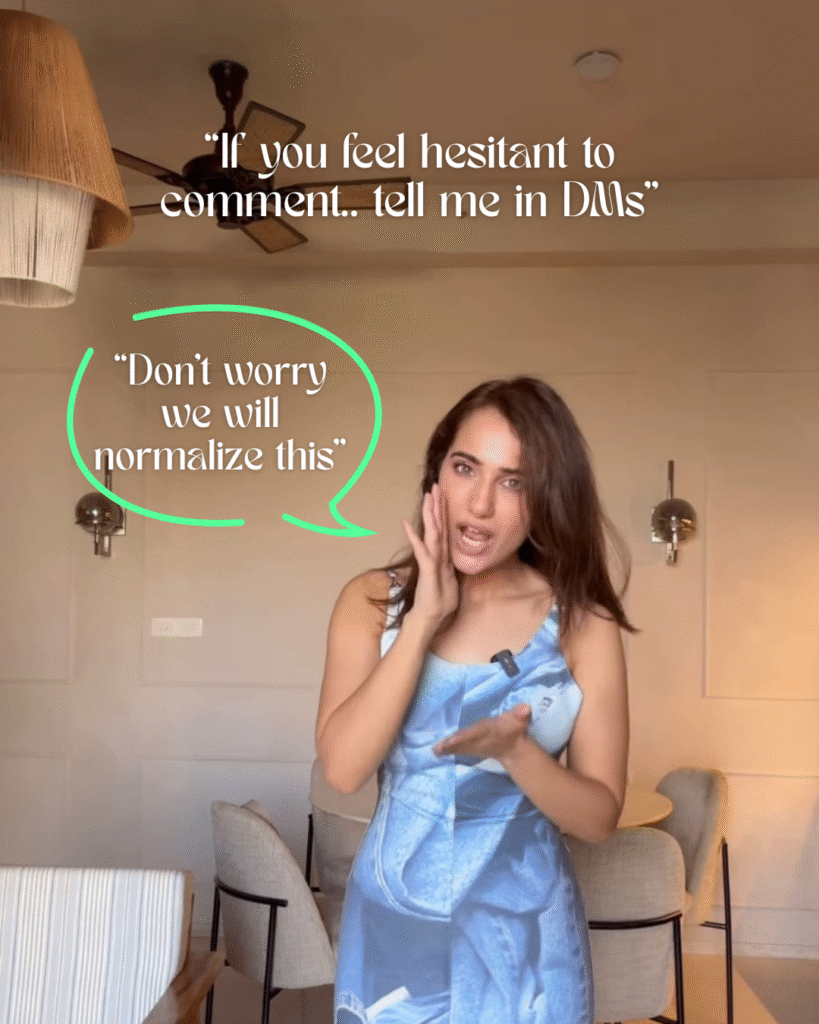
2. The Exhausting Cycle
Once you’ve shown your audience that you see their struggle, the next move is to validate their exhaustion. This stage is all about calling out the endless trial-and-error cycle – the one where they’ve spent money, time, and hope on products that promised relief but delivered nothing close.
Underneat nailed this by walking viewers through every so-called “fix” women have tried:
- The fancy, overengineered bras
- The breathable fabrics that weren’t actually breathable
- Anti-chafing balms and hacks
- “Luxury” innerwear that felt anything but luxurious
These weren’t just product references. They were emotional checkpoints.
Each failed attempt Kusha mentions wasn’t just relatable but reassuring. They played a subtle role of communicating to the audience:
“You’ve done your best and you’re not the problem. The products were.”
This reassuring builds a sense of shared frustration and sets the perfect stage for what comes next.
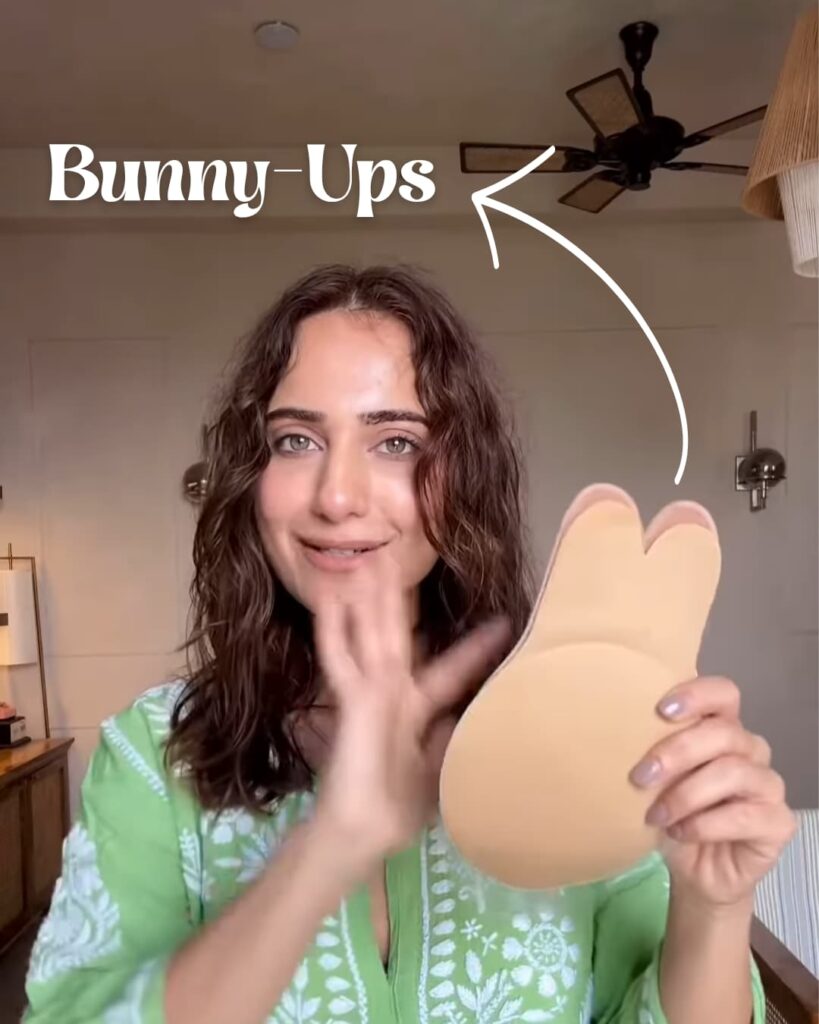
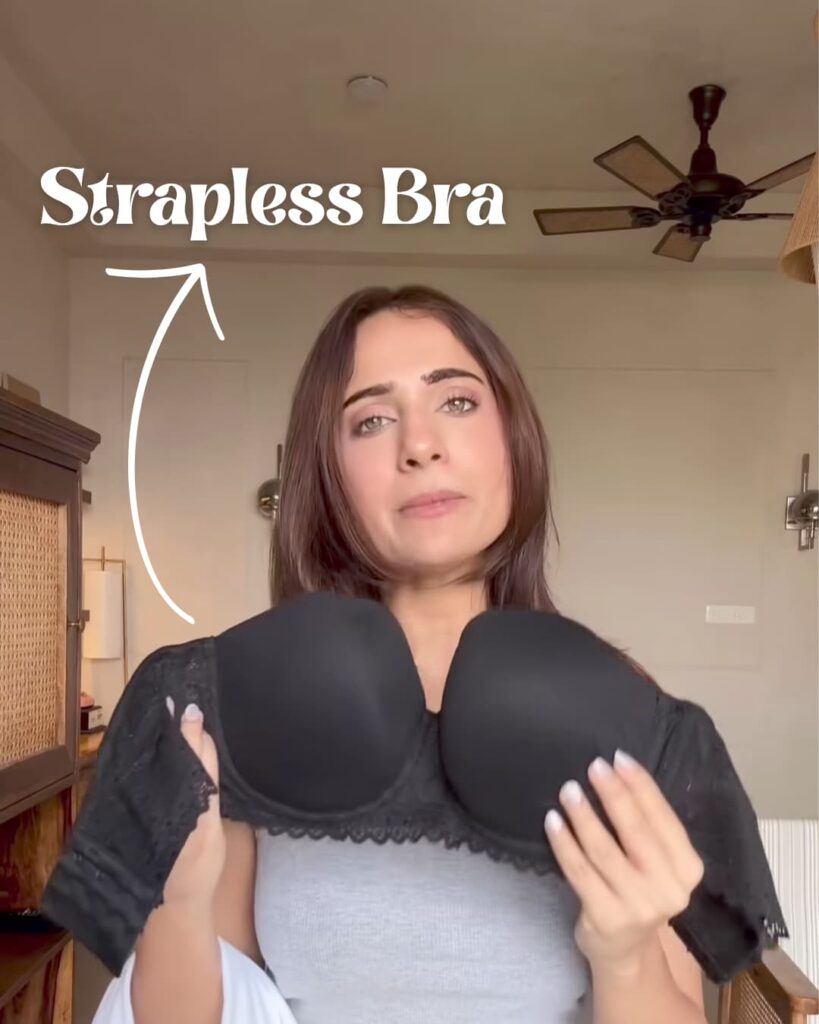
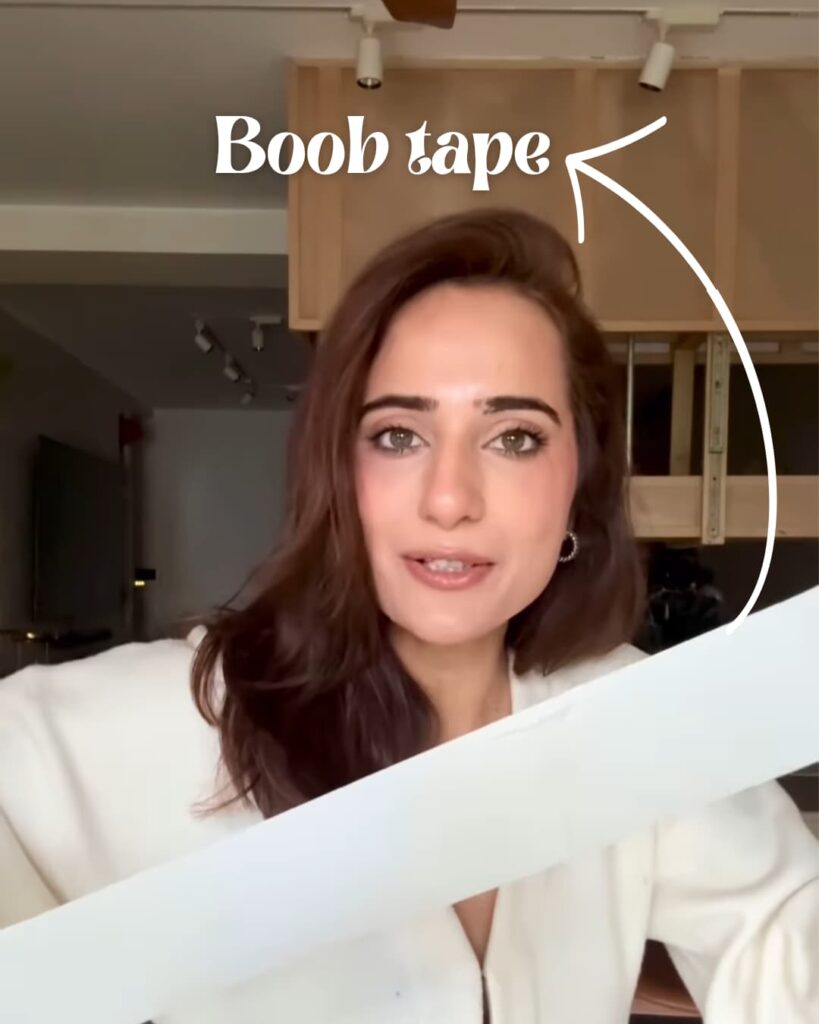
3. Your Approach
After making your audience feel truly seen, it’s time to pivot – not to a pitch, but to perspective.
This is where you introduce your approach to the problem. Not the product. Not the solution. Just the way you see things differently.
For Underneat, Kusha steps in with her point of view – not as a founder first, but as a woman who’s lived through the same discomforts. She shares:
- The desire to feel comfortable without losing confidence
- The intention to design for Indian women and the realities of their bodies
- A way to talk about uncomfortable topics with humour and subtlety, without spelling out every detail
There’s no hard sell. No “here’s what we made.” This honest, human approach is what makes people lean in. Because by now, the audience isn’t just nodding. They’re thinking:
“Finally. Someone who gets it and actually has a clue.”
4. Your Offer
At this stage, it’s no longer about what you’re selling – it’s about why it matters.
After nine reels of teasing the tension, Kusha finally introduces Underneat’s products in the tenth reel [watch it here]. Instead of launching with a hard sell, she opens with a story. A personal one.
“I was 17 when my mom took me to a local shop to buy shapewear…”
That’s the hook, initiating the classic storytelling. It’s awkward, relatable, and instantly disarming. But more importantly, it sets the tone that this isn’t a product launch – it’s a continuation of real life.
From there, she walks everyone through her years of quiet frustrations like limited sizing, lack of variety and the short shelf life of most innerwear, despite the big price tags. To social proof these frustrations, she subtly addresses the fact about being exposed to the raw discomfort of wearing clothes with zero innerwear support while working in the entrainment industry.
She’s not just making a case, she’s building credibility and that’s why the final line –
“We made something for women who’ve had enough of uncomfortable innerwear.”
– lands with impact. Because it’s not a pitch – it feels like relief.
The brilliance here? The offer isn’t trying to convince anyone. It’s just the next logical step in a journey the audience is already walking.
This is what the 4th lightbulb is all about: presenting your offer as the natural solution to a deeply-felt, long-standing problem. Not through persuasion, but through proof and presence.

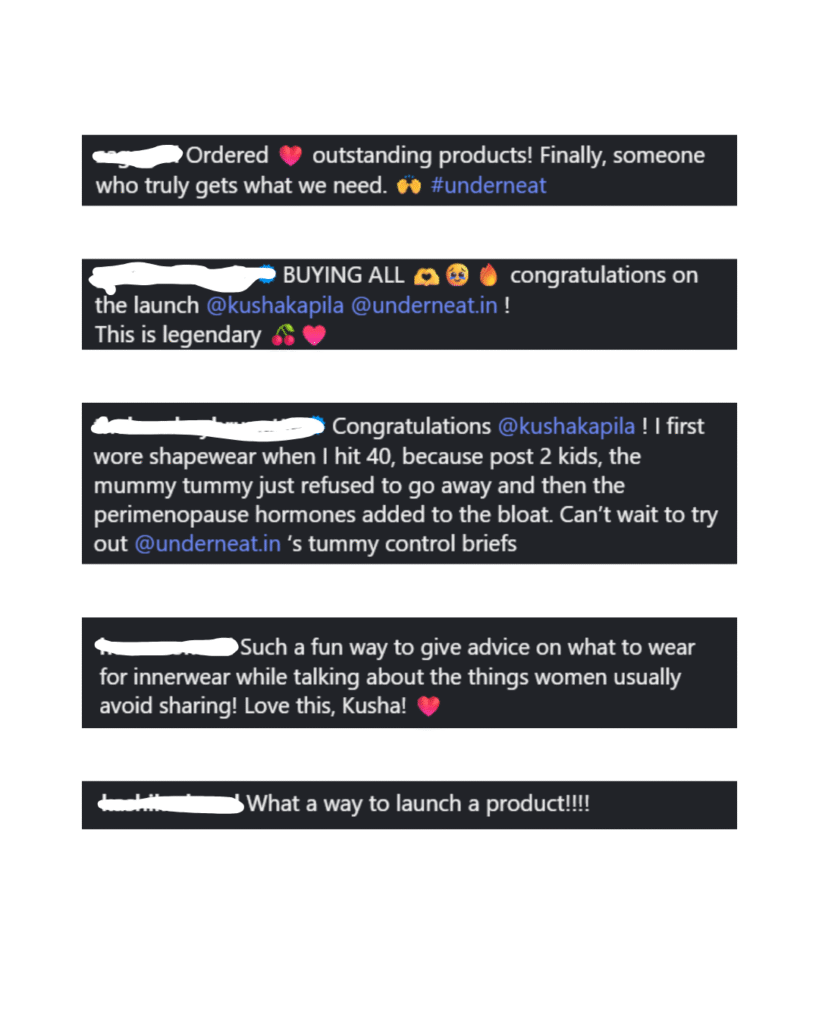
5. Customer’s New Life
The final lightbulb isn’t about flexing features – it’s about showing the shift.
What happens after someone says yes to your product? What does life look like when the problem that once consumed them is now solved? Kusha doesn’t spell it out with dramatic “before-and-after” shots. Instead, she paints a new reality in that familiar, witty Underneat tone. A reality where:
- You’re not yanking, adjusting, or pulling things into place.
- You’re not making secret mental notes about never wearing that top again.
- You’re simply existing – comfortably, confidently, without friction.
But the genius lies in how she transitions into the catalogue. Rather than saying, “Here’s our product range, go buy them now.”
She goes, “Okay, we made 17 products. And honestly? You need all of them.” And somehow, you believe her – not because it’s a sales pitch, but because you’ve been nodding along for 9 reels already.
And with that, Kusha gently hands the spotlight over to you – the viewer, the wearer, the one now imagining their life with these products in their drawer. It’s not transformation. It’s normalization.
This comfort? This ease? This could be your new normal – and you absolutely deserve it.
Conclusion
The Underneat campaign didn’t go viral because it was loud. It went viral because it was emotionally honest. By layering the 5 lightbulbs in the right order and through a relatable face like Kusha the brand created a human-centric launch that felt more like a movement than a marketing stunt.
It made people feel:
- “I’m not alone.”
- “They actually get me.”
- “This is made for me.”
That’s what made the drop hit harder than just another product on the shelf.
RELATED POSTS
View all
